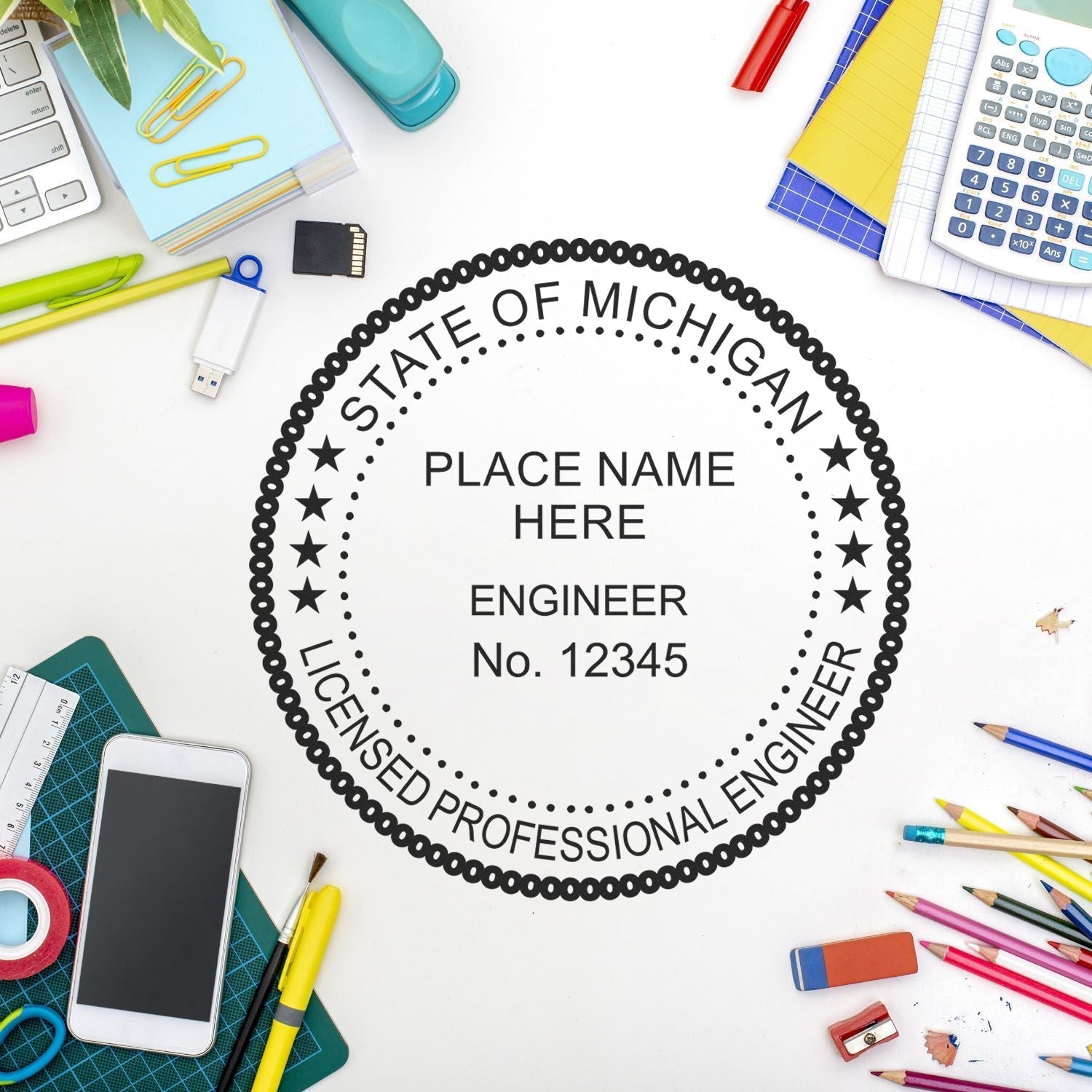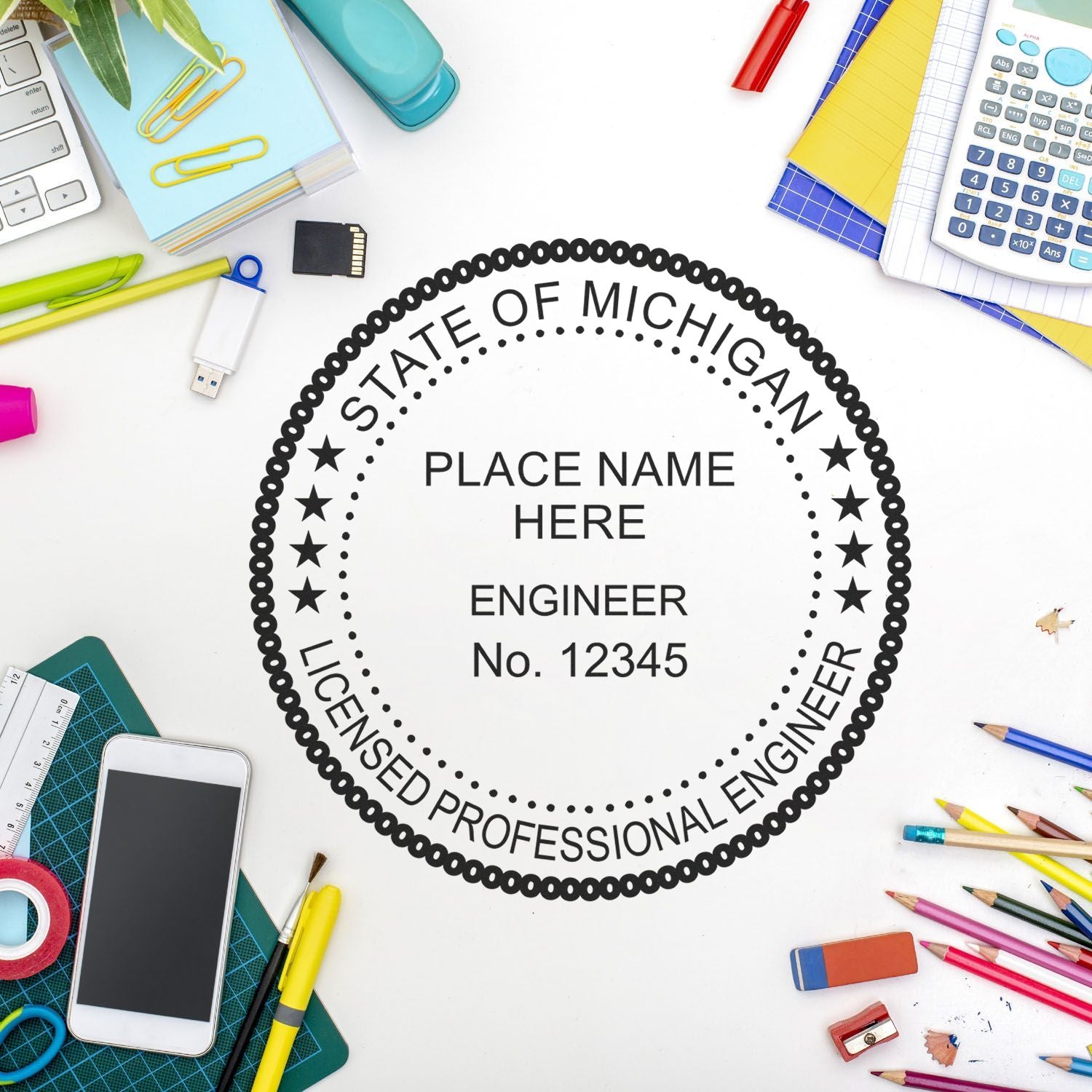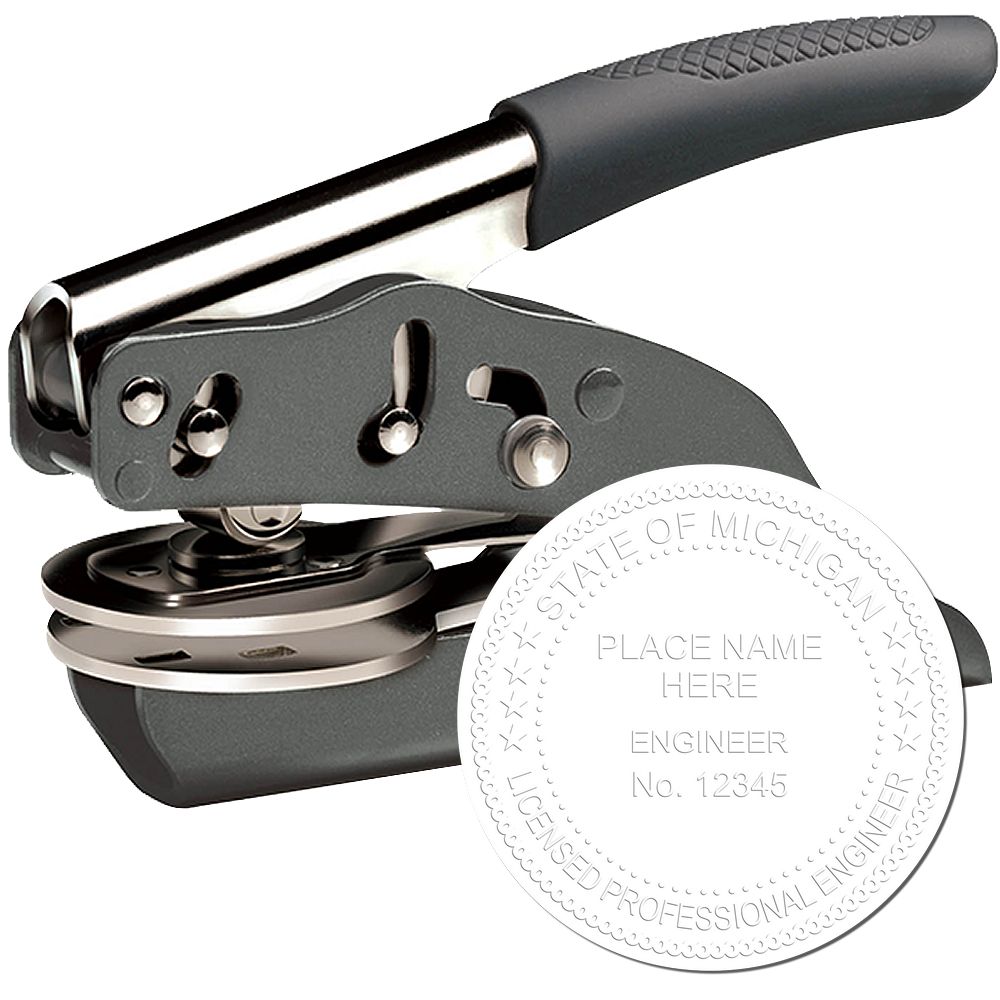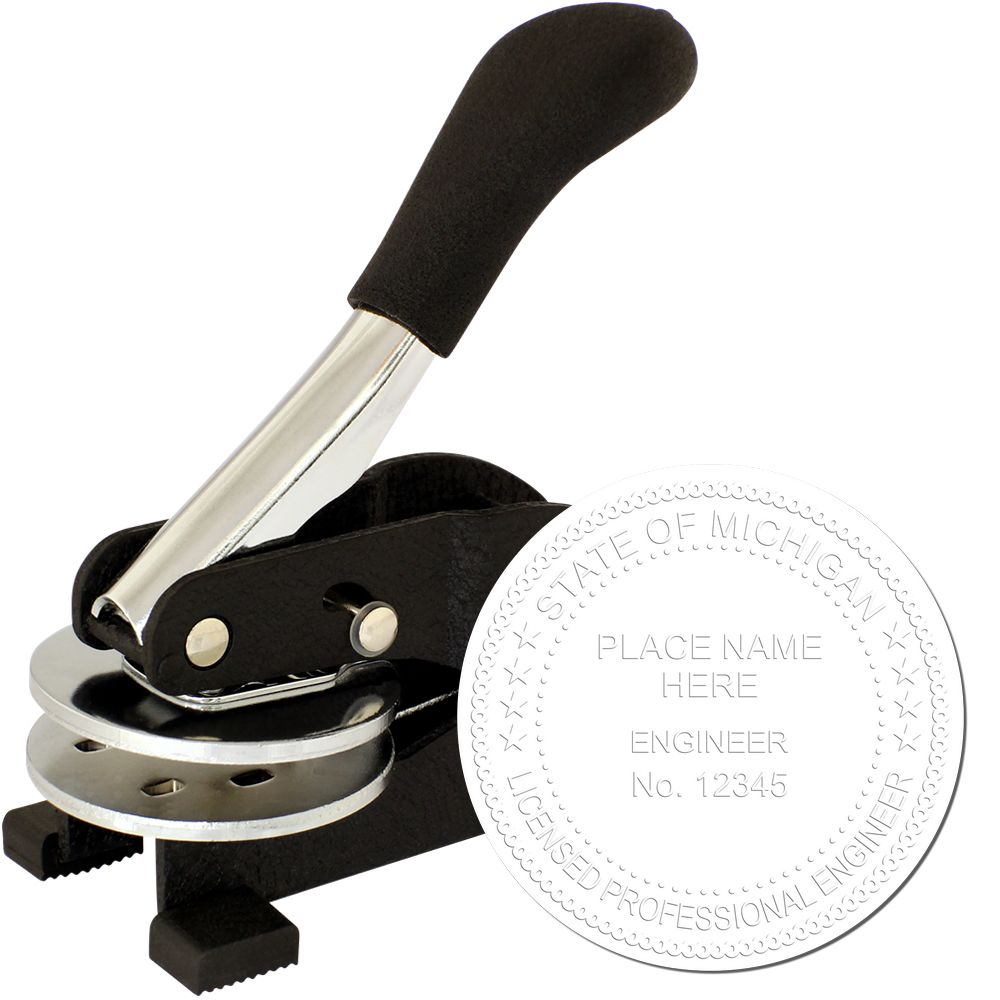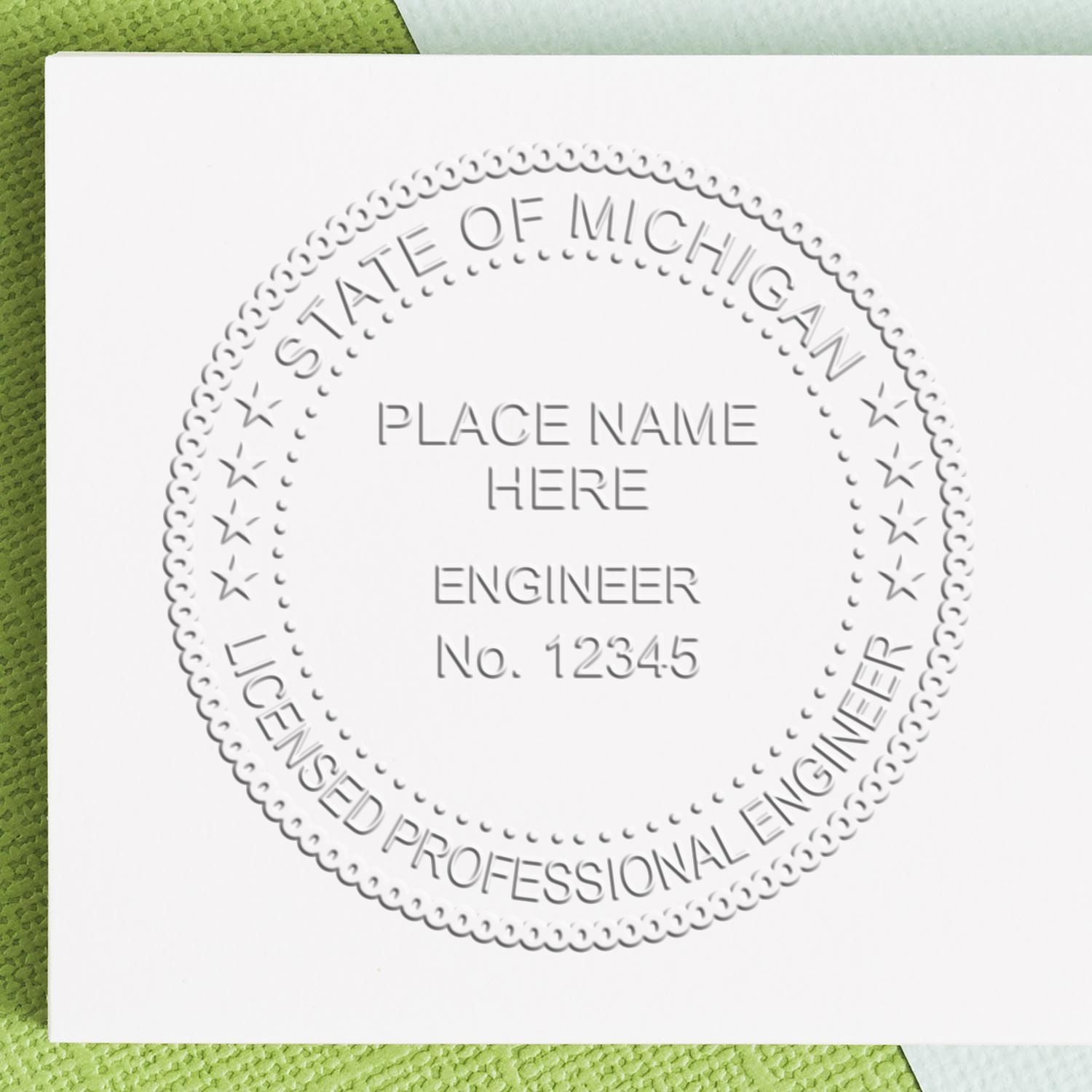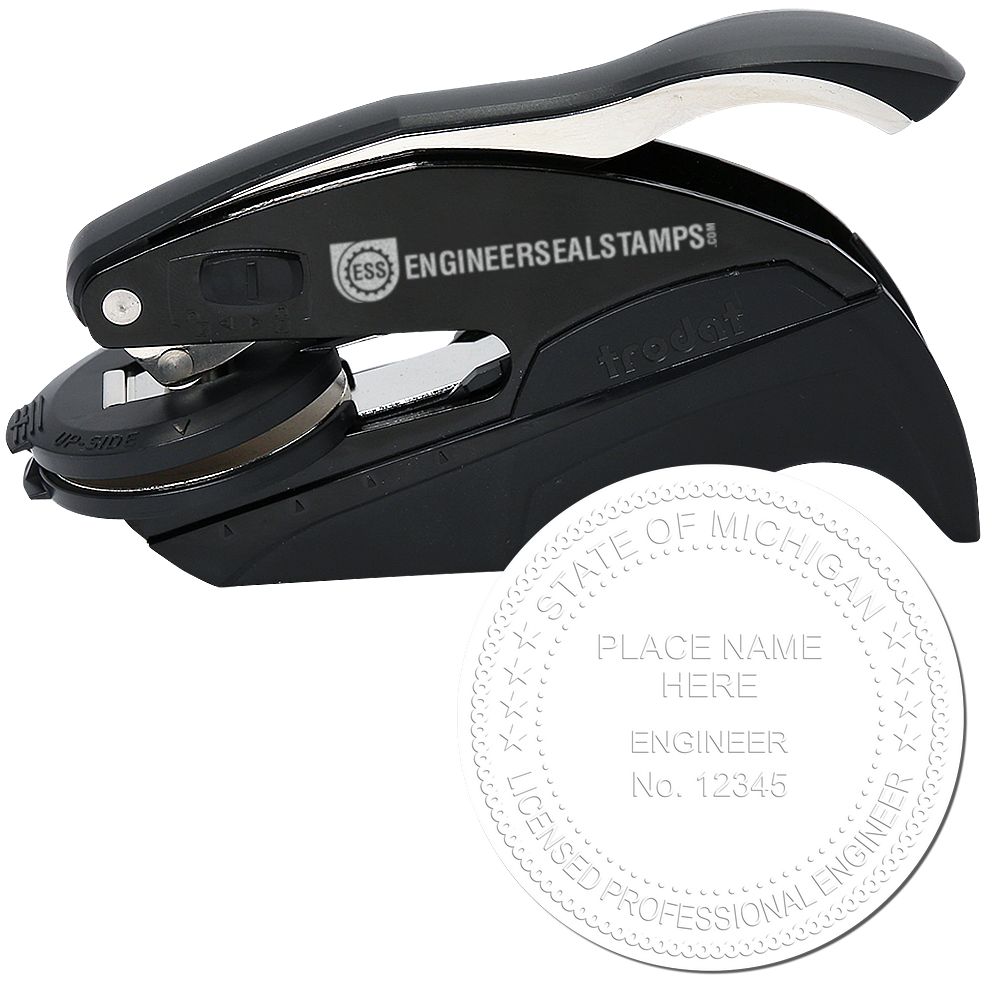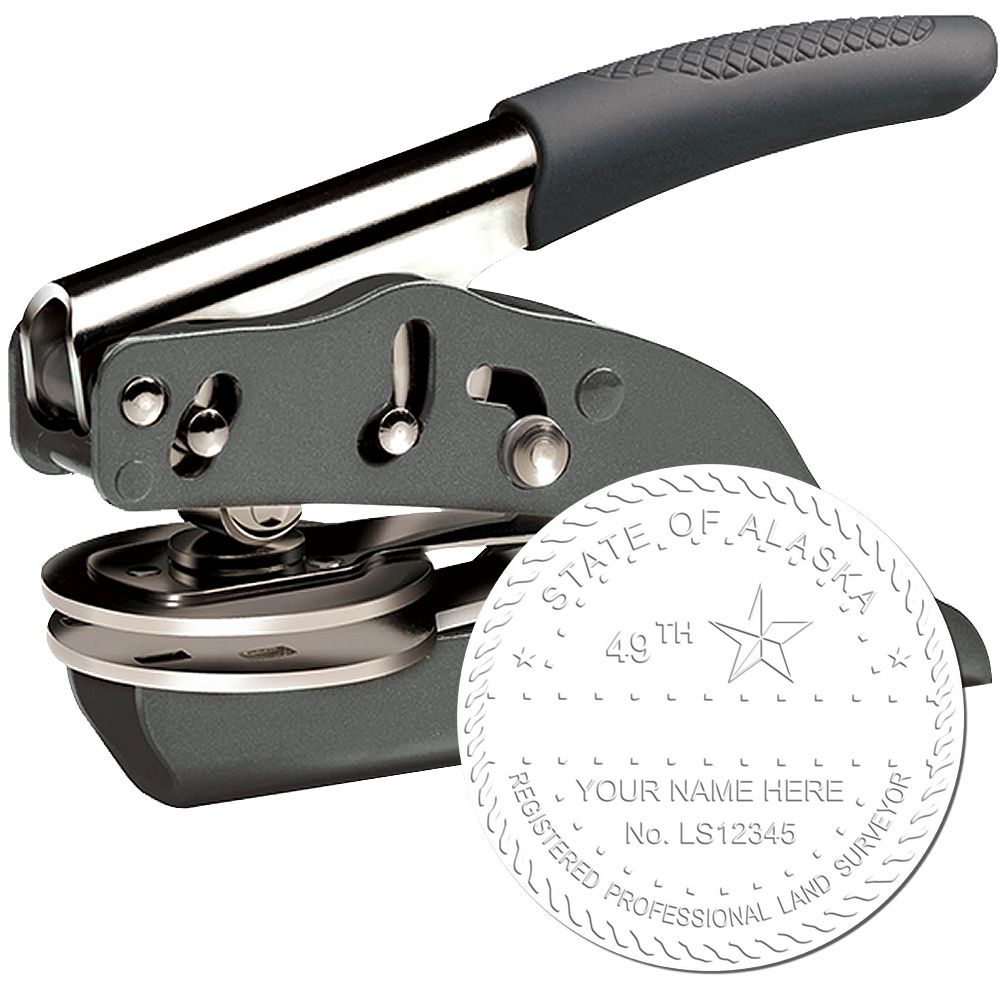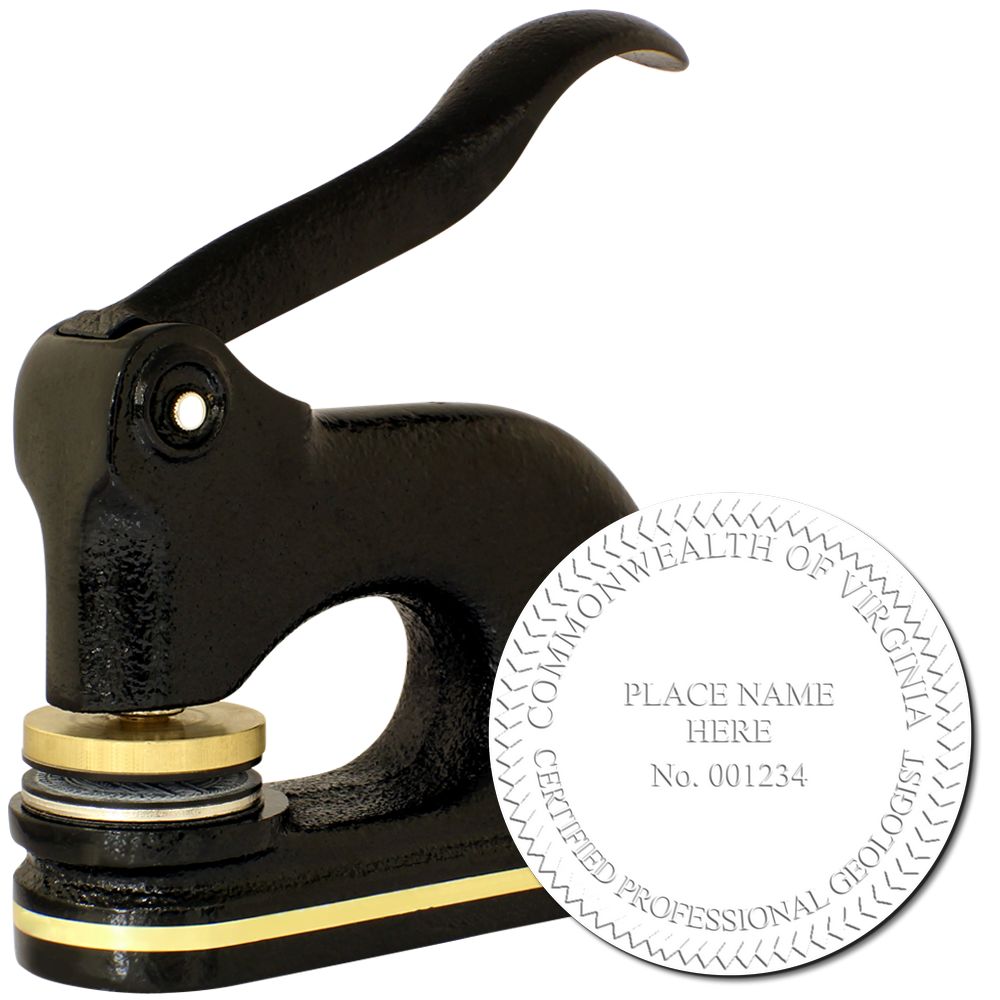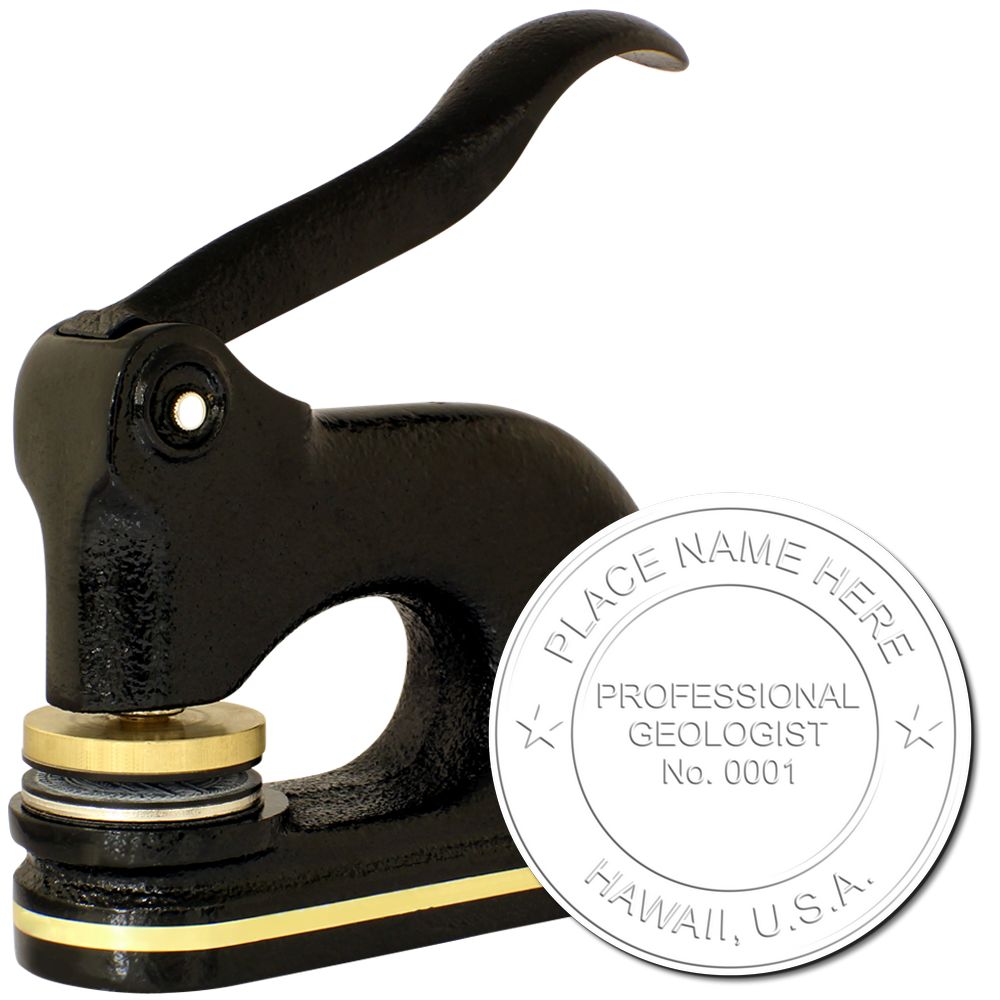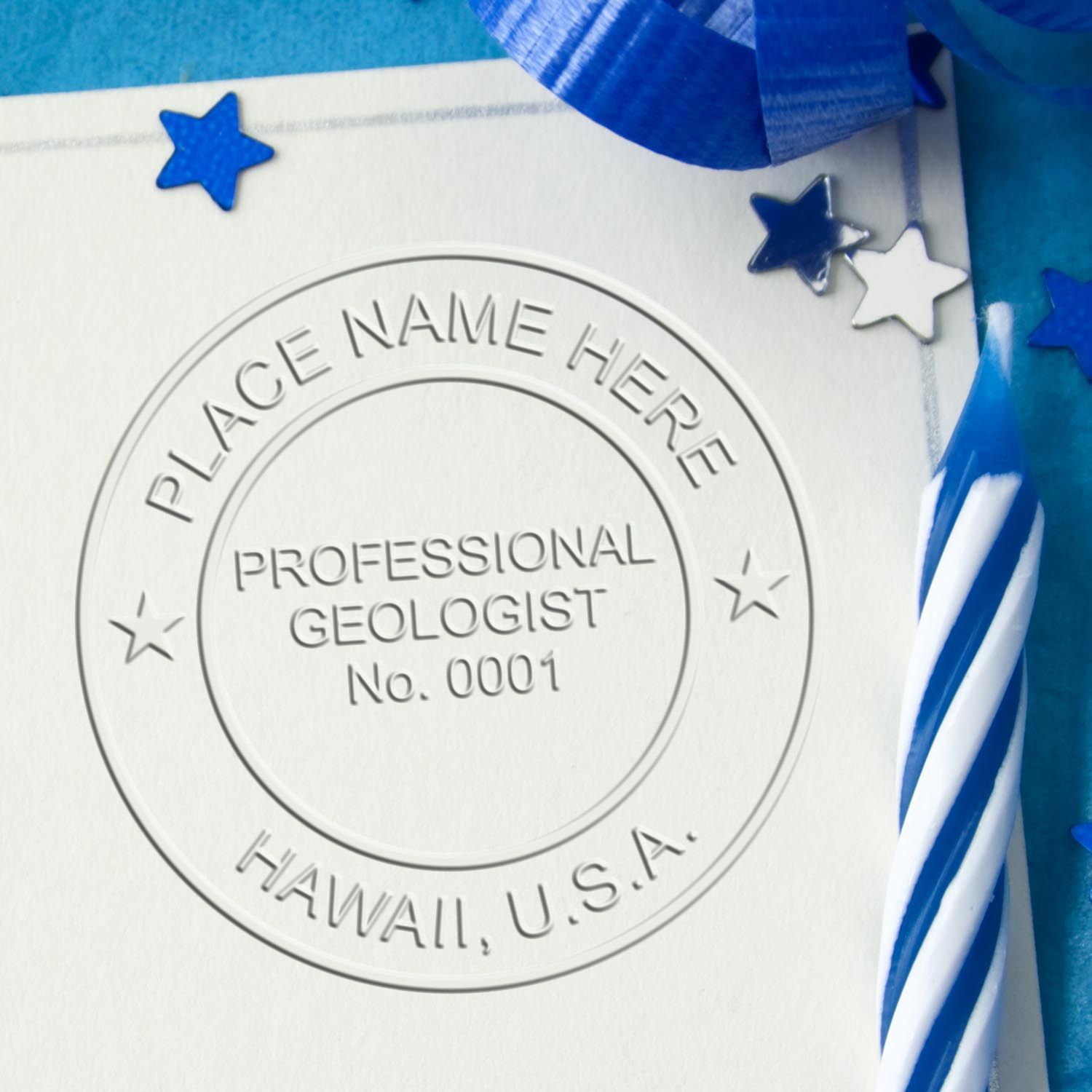The Importance of the Michigan Engineering Seal
The Michigan Engineering Seal holds great significance in the field of engineering and is a symbol of professional competence and integrity. Understanding the purpose and significance of engineering seals, particularly the Michigan Engineering Seal, is essential for engineers in Michigan.
Understanding the Purpose of Engineering Seals
Engineering seals serve as an official certification that the work produced by an engineer meets the required standards of safety, quality, and professionalism. These seals are affixed to engineering documents, such as drawings, plans, and reports, to indicate that they have been reviewed and approved by a licensed professional engineer.
The purpose of engineering seals is to protect the public by ensuring that only qualified professionals are responsible for the design, construction, and maintenance of critical infrastructure and systems. By affixing an engineering seal, engineers take legal and ethical responsibility for their work, attesting to its accuracy and compliance with applicable codes and regulations.
Significance of the Michigan Engineering Seal
In Michigan, the Michigan Engineering Seal holds specific importance as it signifies that the engineer is licensed to practice engineering within the state. The seal is a requirement for professional engineers (PE) in Michigan, demonstrating their competency and expertise in their respective engineering disciplines.
The Michigan Engineering Seal serves as a mark of distinction, indicating that the engineer has met the rigorous educational, experience, and examination requirements set forth by the Michigan Department of Licensing and Regulatory Affairs (LARA). This distinction not only enhances the engineer's professional reputation but also provides assurance to clients, employers, and regulatory bodies that the engineer's work meets the highest standards of quality and compliance.
Engineers in Michigan must be familiar with the requirements to obtain the Michigan Engineering Seal. These requirements may include obtaining a professional engineering license, meeting educational qualifications, and passing the relevant examinations. For detailed information on the requirements for obtaining the Michigan Engineering Seal, refer to our article on Michigan PE stamp requirements.
By understanding the purpose and significance of the Michigan Engineering Seal, engineers can appreciate its role in establishing professional credibility, ensuring public safety, and providing professional recognition within the engineering community in Michigan. Adhering to the guidelines and regulations associated with the use of the Michigan Engineering Seal is vital for maintaining the integrity and reputation of the profession. For more information on the guidelines for using the seal, refer to our article on Michigan PE stamp guidelines.
Obtaining the Michigan Engineering Seal
To obtain the Michigan Engineering Seal, engineers in the state of Michigan must meet specific requirements and follow a set of steps. This section outlines the requirements for Michigan engineers and the process to acquire the engineering seal.
Requirements for Michigan Engineers
Before applying for the Michigan Engineering Seal, engineers must meet certain requirements set by the Michigan Department of Licensing and Regulatory Affairs (LARA). These requirements typically include:
-
Education: Engineers must hold a degree in engineering from an accredited institution or have equivalent education and experience.
-
Experience: Engineers need to gain a specific number of years of professional engineering experience under the guidance of a licensed professional engineer (PE). The exact experience requirements vary depending on the engineering discipline.
-
Examination: Engineers must pass the Fundamentals of Engineering (FE) exam, which tests the foundational knowledge and understanding of engineering principles. This exam is the first step toward becoming a licensed professional engineer.
-
Licensure: Engineers must obtain licensure as a Professional Engineer (PE) in the state of Michigan. This involves passing the Principles and Practice of Engineering (PE) exam, which assesses the applicant's ability to practice engineering competently and ethically.
Save 20%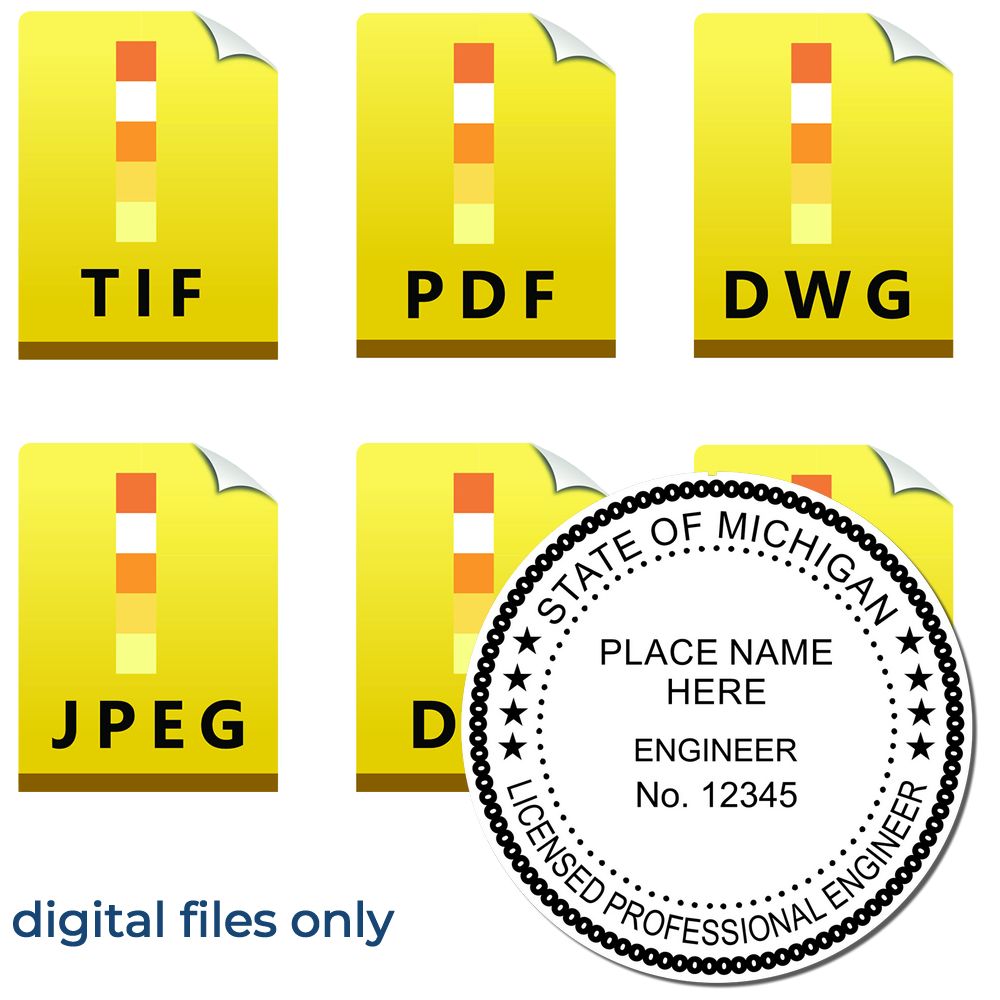
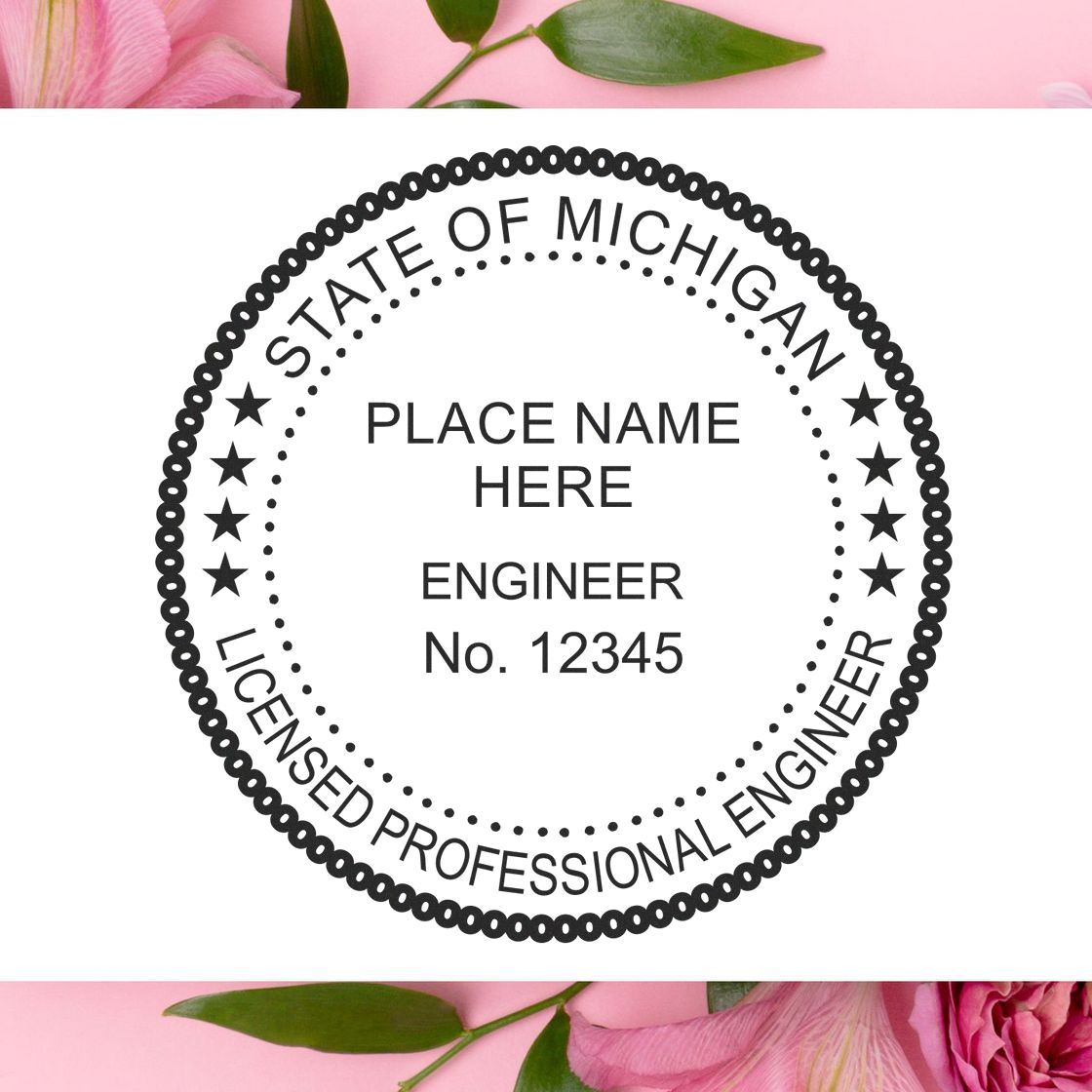 Digital Michigan PE Stamp, Electronic Seal for Michigan Engineer, 6 Files3008ENG-MISale price$20.00 Regular price$25.00Save 22%
Digital Michigan PE Stamp, Electronic Seal for Michigan Engineer, 6 Files3008ENG-MISale price$20.00 Regular price$25.00Save 22%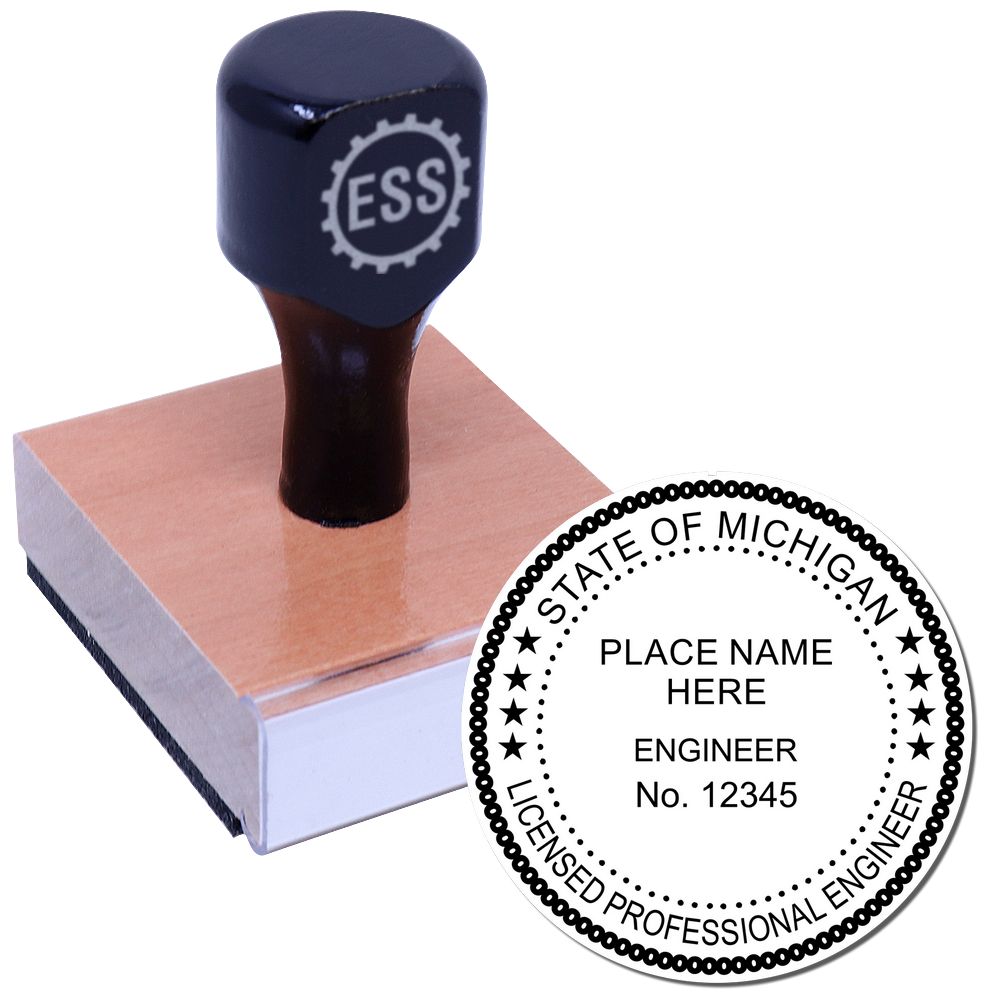
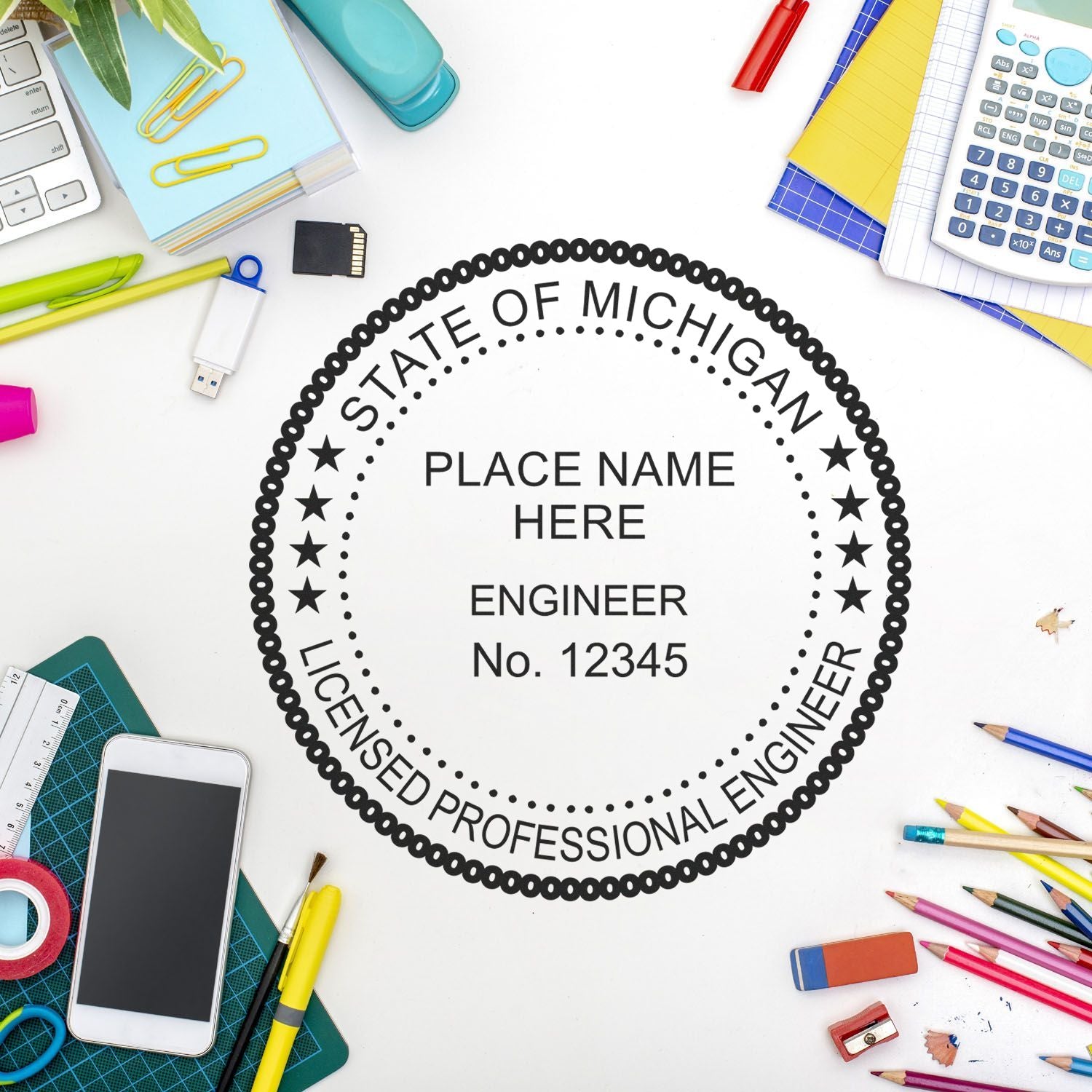 Michigan Professional Engineer Seal Stamp, MI PE Stamp3005ENG-MISale price$34.95 Regular price$45.00Save 15%
Michigan Professional Engineer Seal Stamp, MI PE Stamp3005ENG-MISale price$34.95 Regular price$45.00Save 15%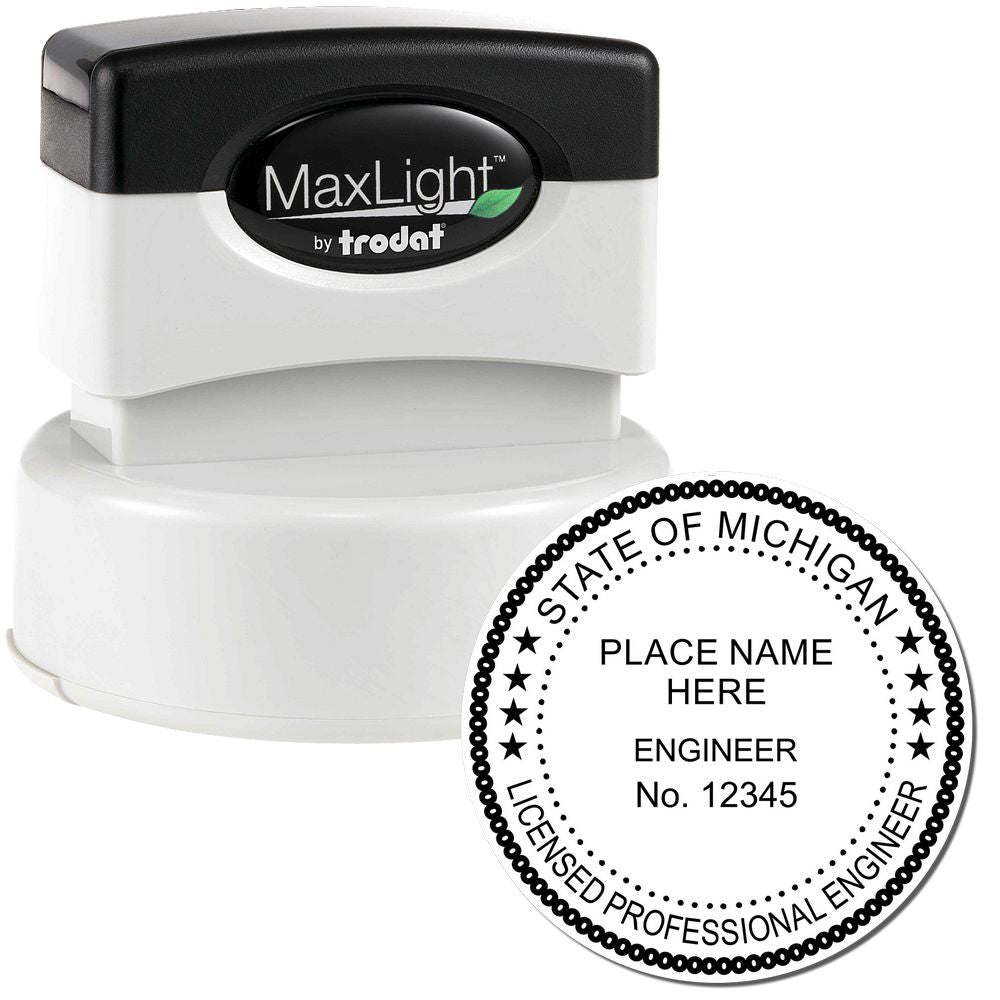
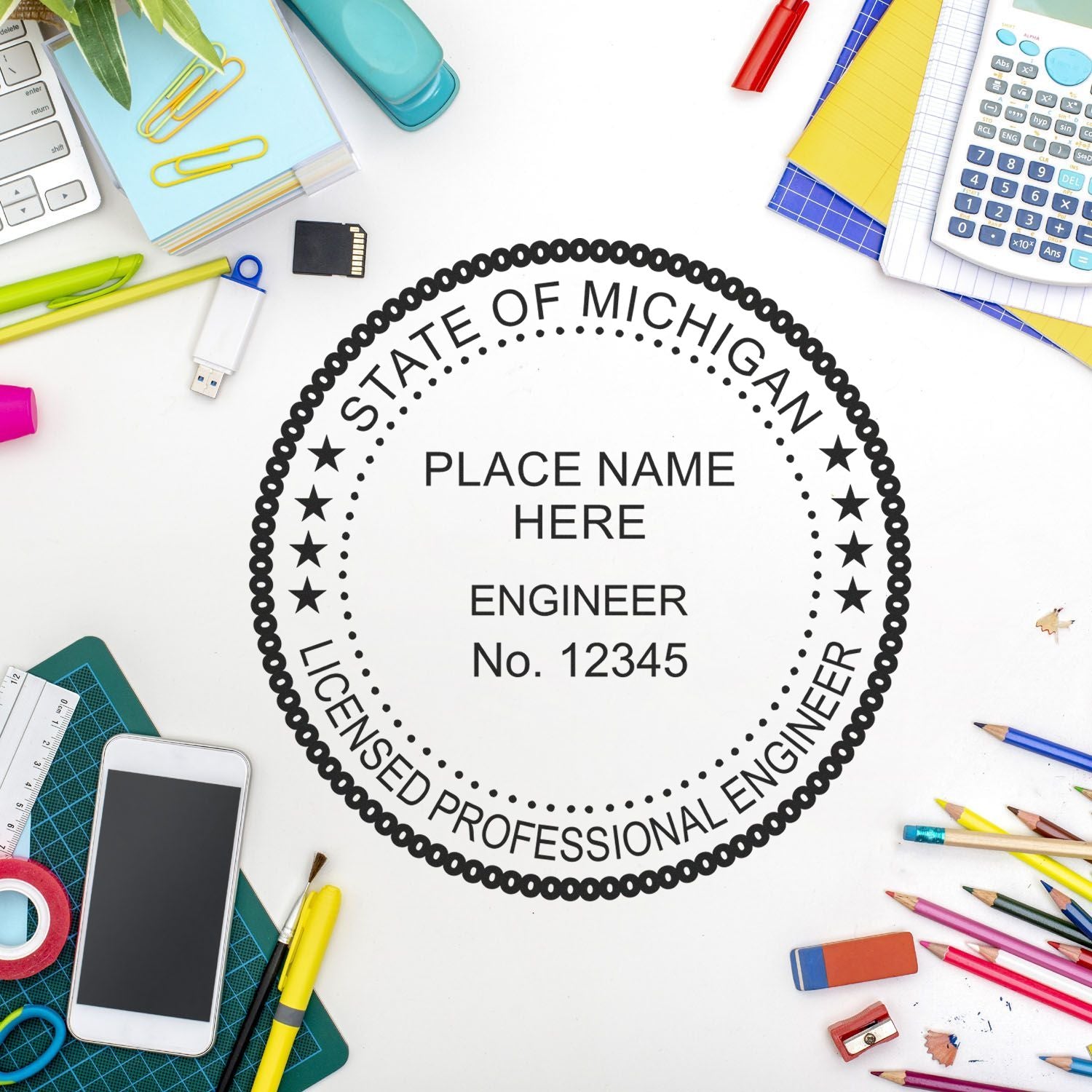 Premium MaxLight Pre-Inked Michigan Engineering Stamp3021ENG-MISale price$46.95 Regular price$54.95
Premium MaxLight Pre-Inked Michigan Engineering Stamp3021ENG-MISale price$46.95 Regular price$54.95
It's important for engineers to familiarize themselves with the specific requirements outlined by LARA and ensure they meet all the necessary criteria. For more information on the requirements for the Michigan PE stamp, refer to our article on Michigan PE stamp requirements.
Steps to Acquire the Engineering Seal
Once engineers have met the requirements set by LARA, they can proceed with the process of acquiring the Michigan Engineering Seal. The steps typically involve:
-
Application: Engineers need to submit an application to the Michigan Department of Licensing and Regulatory Affairs (LARA) to obtain their engineering seal. The application requires the engineer's personal information, educational background, and proof of passing the necessary exams.
-
Fee Payment: Engineers must pay the required fee along with their application. The fee covers the processing and administration costs associated with obtaining the engineering seal.
-
Documentation: Engineers may need to provide additional documentation, such as transcripts, proof of work experience, and verification of licensure in other states (if applicable). These documents help validate the engineer's qualifications and ensure compliance with the licensing requirements.
-
Approval and Issuance: Once the application and supporting documents have been reviewed and approved by LARA, the engineer will receive their Michigan Engineering Seal. The seal typically consists of the engineer's name, license number, and the phrase "Professional Engineer."
It's crucial for engineers to follow the specific instructions provided by LARA and ensure they submit all required documentation accurately and promptly. By adhering to the proper procedures, engineers can successfully obtain their Michigan Engineering Seal and demonstrate their professional competence. For more details on the guidelines and regulations related to the Michigan PE stamp, refer to our article on Michigan PE stamp guidelines.
Design and Elements of the Michigan Engineering Seal
The Michigan Engineering Seal is a distinctive symbol that holds great significance for engineers practicing in the state of Michigan. Understanding the design and elements of the seal is essential to appreciate its importance and adhere to its proper usage guidelines.
Overview of the Seal Design
The Michigan Engineering Seal features a circular design, which is a common characteristic of engineering seals across various jurisdictions. The outer border of the seal consists of a delicate pattern, adding an aesthetic touch to the overall design. Within the circular border, the seal showcases specific elements that convey important information.
Meaning Behind the Elements
The Michigan Engineering Seal incorporates several key elements, each representing a significant aspect of the engineering profession. Understanding the meaning behind these elements allows engineers to appreciate the symbolism and purpose of the seal.
-
State Name: The top portion of the seal prominently displays the name "MICHIGAN" in bold capital letters. This indicates that the seal represents the engineering profession within the state.
-
State Motto: Positioned below the state name, the Latin phrase "SI QUÆRIS PENINSULAM AMŒNAM CIRCUMSPICE" is featured on a banner. Translated as "If you seek a pleasant peninsula, look about you," this motto reflects Michigan's unique geographical location and natural beauty.
-
State Seal: The Michigan state seal is placed at the center of the engineering seal. This inclusion reinforces the connection between the engineering profession and the state of Michigan.
-
Engineer's Name: Surrounding the state seal, the engineer's name is inscribed along the inner border of the seal. This personalization is crucial for identifying the engineer responsible for the work associated with the seal.
-
Profession Designation: At the bottom of the seal, the words "REGISTERED PROFESSIONAL ENGINEER" are featured. This signifies that the engineer holding the seal has met the necessary requirements and is recognized as a registered professional engineer in the state of Michigan.
Save 11%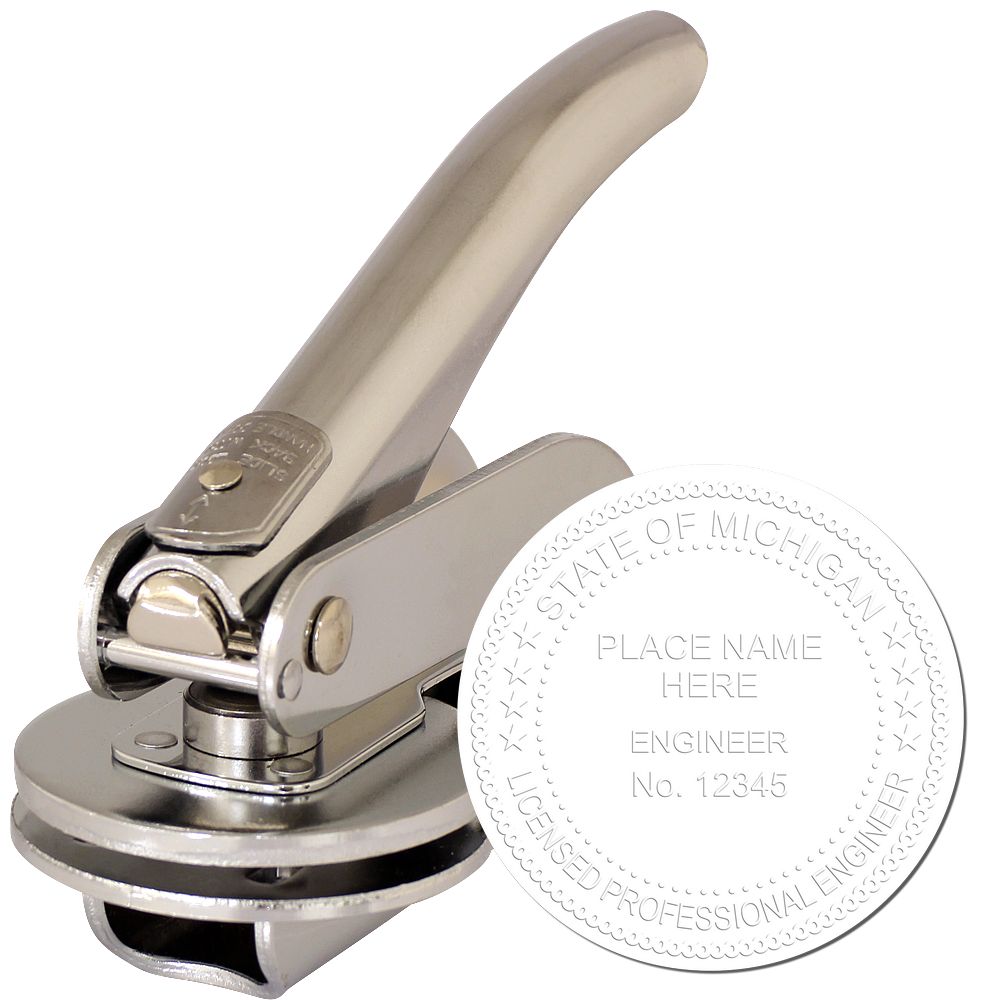
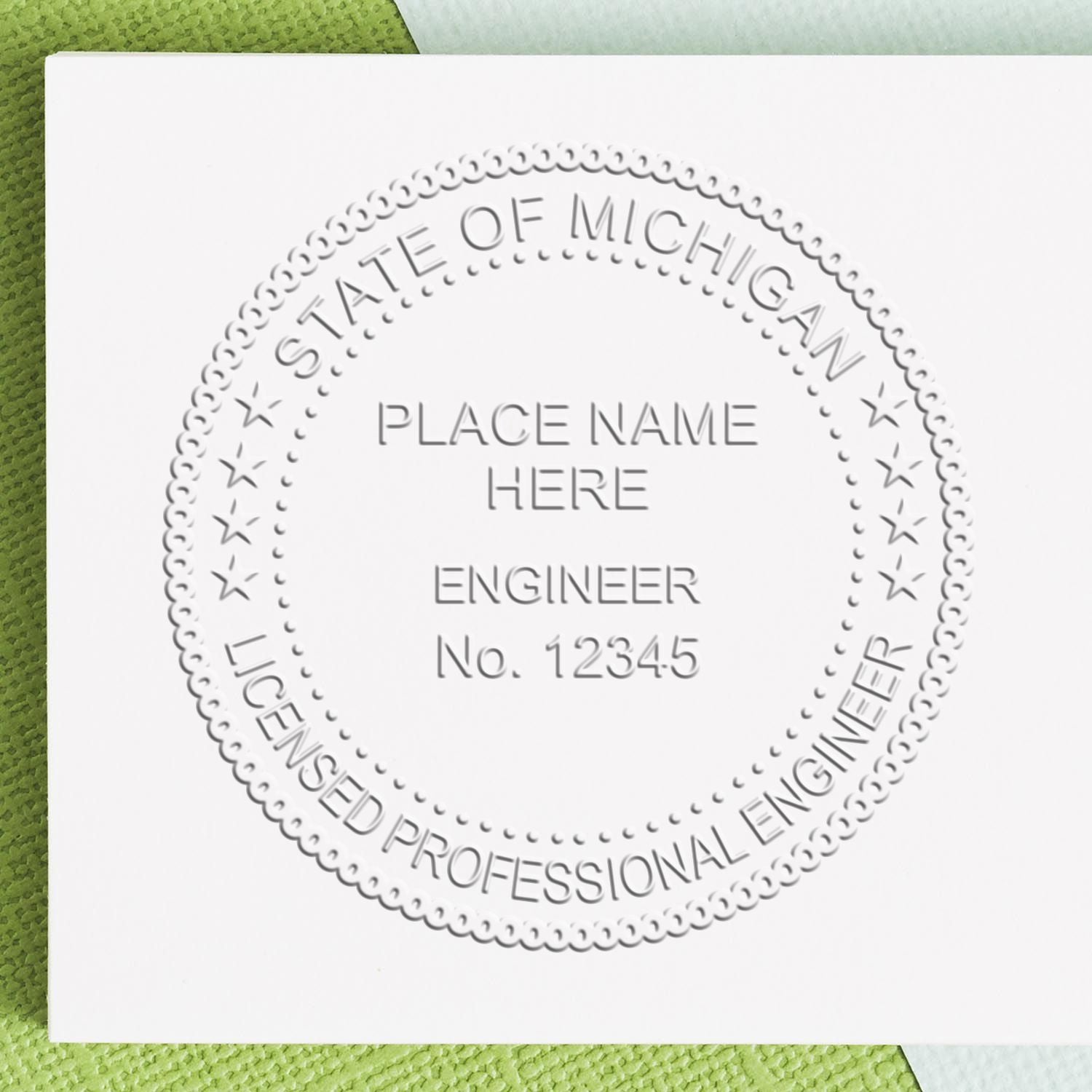 Handheld Michigan Professional Engineer Seal Embosser3001ENG-MISale price$39.95 Regular price$44.95Save 7%
Handheld Michigan Professional Engineer Seal Embosser3001ENG-MISale price$39.95 Regular price$44.95Save 7%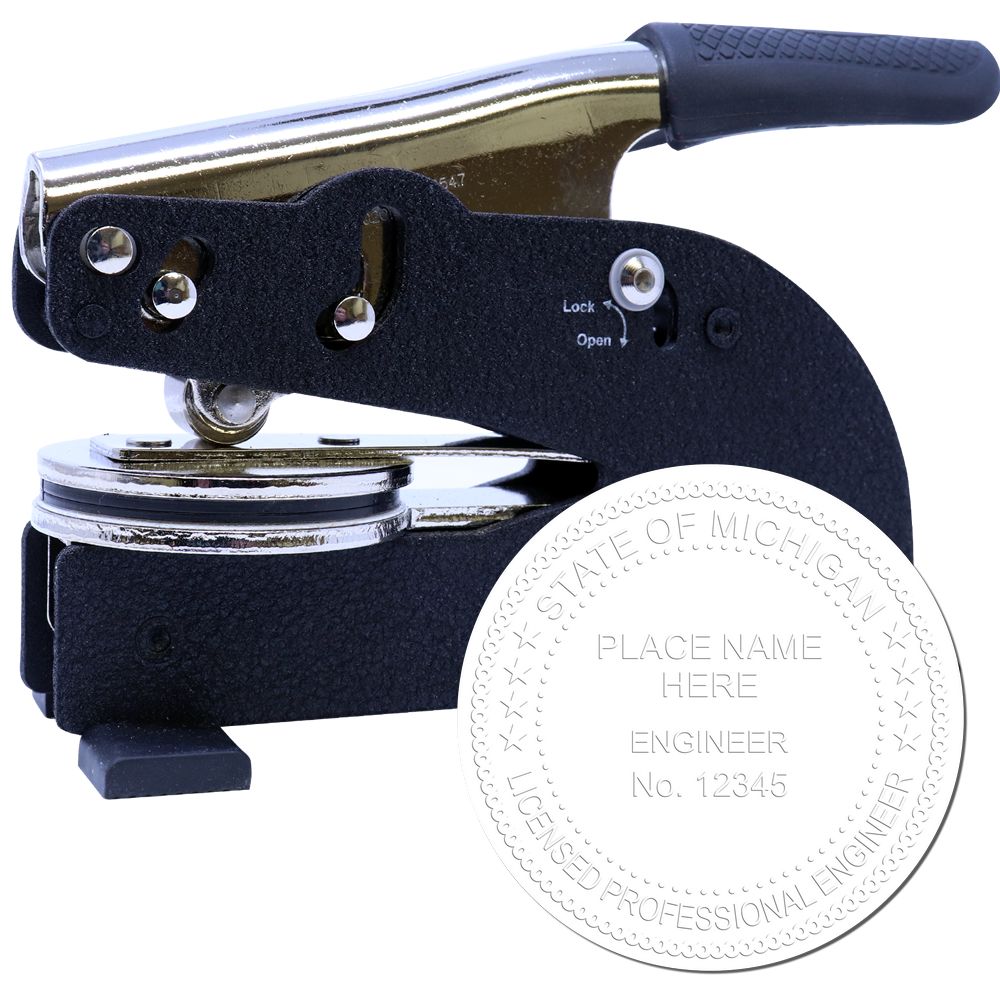
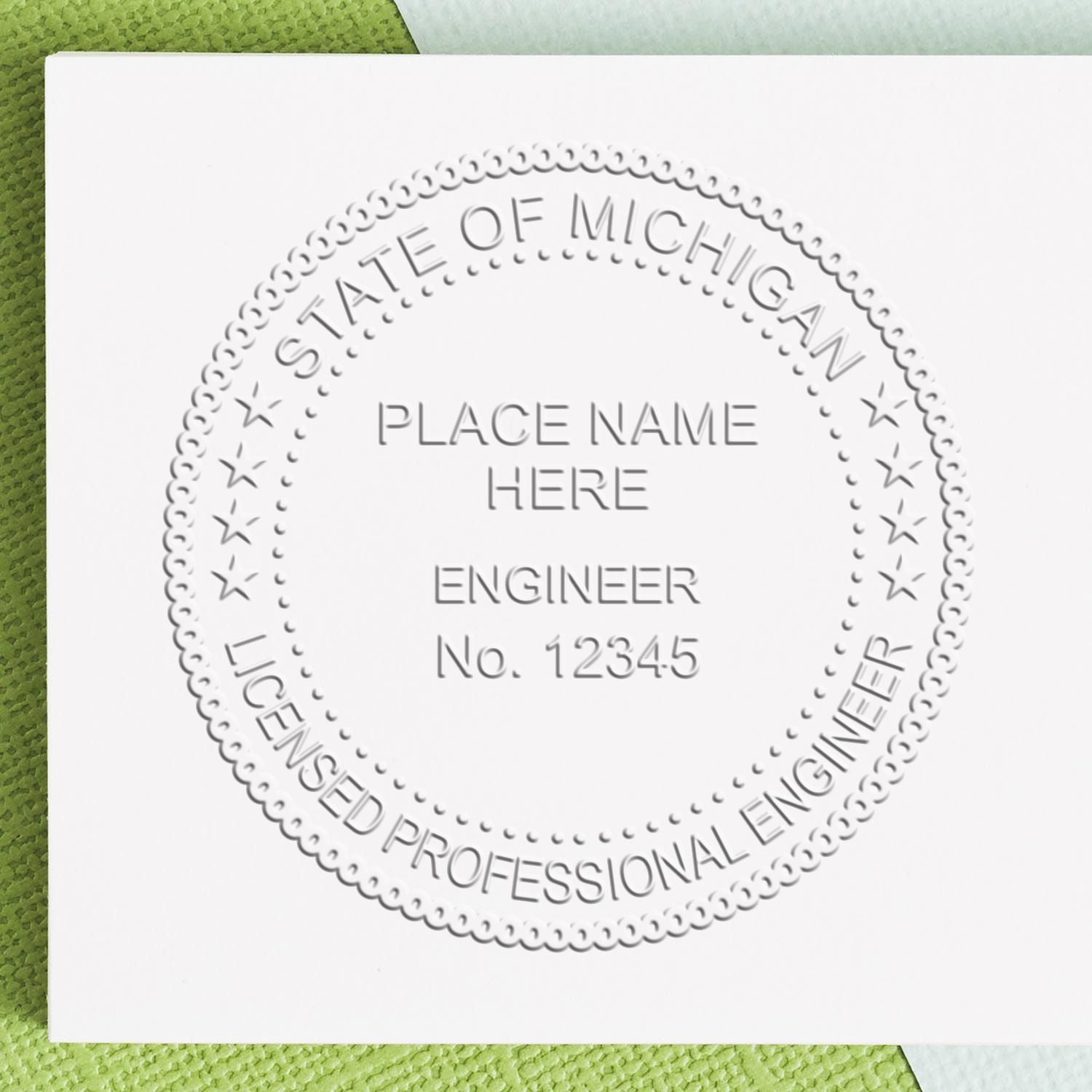 Long Reach Michigan PE Seal for Michigan Professional Engineer3022ENG-MISale price$129.95 Regular price$140.00
Long Reach Michigan PE Seal for Michigan Professional Engineer3022ENG-MISale price$129.95 Regular price$140.00
Understanding the design and elements of the Michigan Engineering Seal is essential for engineers seeking to acquire and use the seal correctly. Adhering to the guidelines set forth by the state ensures that the seal is used in a proper and professional manner. For detailed information on the requirements, guidelines, and regulations associated with the Michigan Engineering Seal, refer to our article on Michigan PE stamp requirements and Michigan PE stamp guidelines.
Proper Usage of the Michigan Engineering Seal
Once you have obtained the Michigan Engineering Seal, it is crucial to understand the guidelines for its proper usage. Adhering to these guidelines ensures that the seal is used appropriately and in compliance with legal and ethical considerations.
Guidelines for Using the Seal
When using the Michigan Engineering Seal, it is important to follow certain guidelines to maintain its integrity and uphold professional standards. Here are some key guidelines to keep in mind:
-
Authorized Use: The Michigan Engineering Seal should only be used by licensed professional engineers who have met the requirements set by the state. It is essential to ensure that you are authorized to use the seal before affixing it to any engineering documents.
-
Accurate Representation: The seal should be used in a clear and legible manner, ensuring that all elements are accurately represented. Any modifications or alterations to the seal are strictly prohibited, as they can undermine its authenticity and credibility.
-
Proper Placement: The Michigan Engineering Seal should be placed prominently on engineering documents, such as plans, drawings, and reports. It is typically affixed near the engineer's signature or in a location specified by regulatory authorities. Ensure that the seal is visible and clearly identifiable.
-
Seal Size: The size of the Michigan Engineering Seal may vary depending on the document's size and the regulations of the specific jurisdiction. It is important to refer to the guidelines provided by the regulatory authorities to determine the appropriate size for your engineering documents.
For more specific information regarding the size requirements and guidelines for using the Michigan Engineering Seal, consult the Michigan PE stamp guidelines article.
Legal and Ethical Considerations
Using the Michigan Engineering Seal also comes with legal and ethical responsibilities. Here are a few considerations to keep in mind:
-
Regulatory Compliance: Ensure that you are familiar with the regulations and requirements set forth by the Michigan licensing board. It is your responsibility to stay updated on any changes in regulations related to the use of the engineering seal.
-
Document Accuracy: When affixing the Michigan Engineering Seal to engineering documents, it is essential to ensure the accuracy and completeness of the information provided. The seal signifies that the engineer takes professional responsibility for the content and accuracy of the document.
-
Confidentiality and Non-Disclosure: As an engineer, it is crucial to uphold client confidentiality and not disclose any confidential or proprietary information without proper authorization. Respect the privacy and intellectual property rights of your clients and employers.
By adhering to the guidelines for using the Michigan Engineering Seal and understanding the legal and ethical considerations, you can uphold the integrity of the profession and maintain the trust of your clients and colleagues. Always stay informed about any changes in regulations and seek guidance from the appropriate regulatory authorities when in doubt. For more information on the requirements and regulations for obtaining the Michigan Engineering Seal, refer to the Michigan PE stamp requirements and Michigan PE stamp regulations articles.
Benefits of the Michigan Engineering Seal
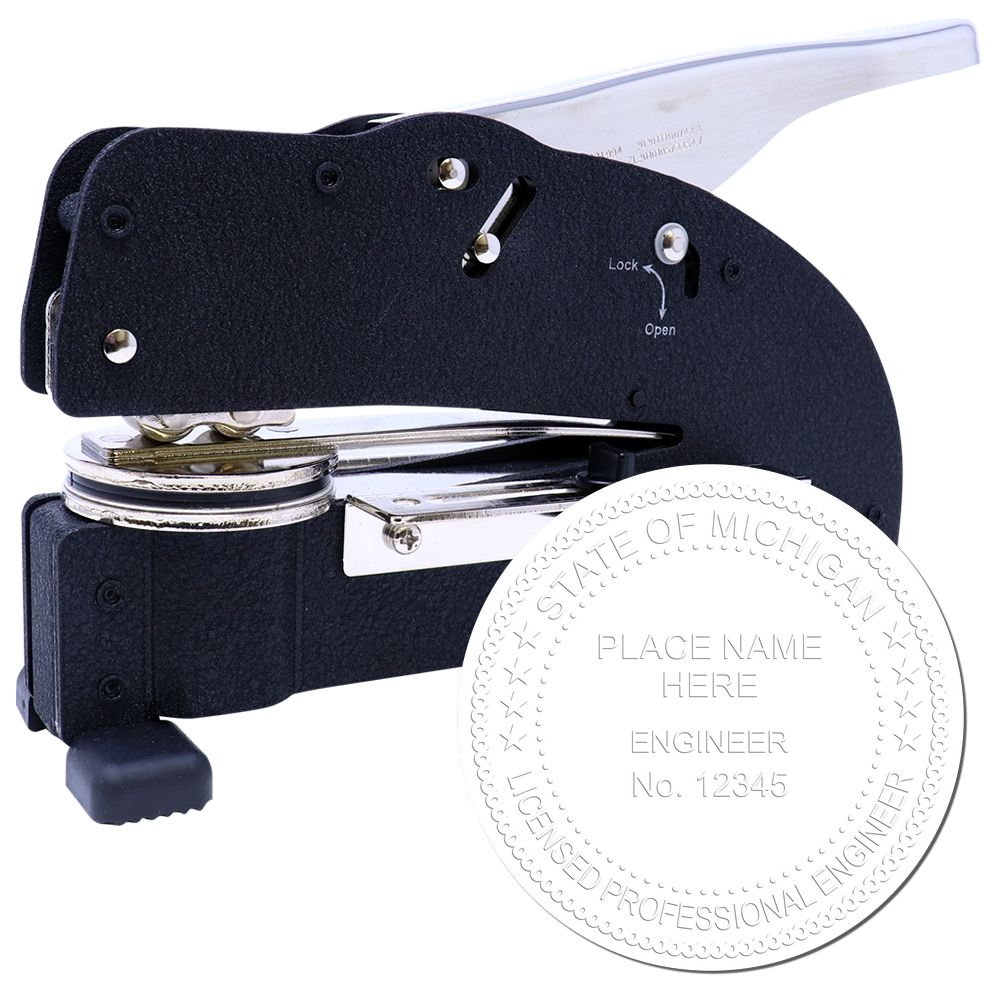
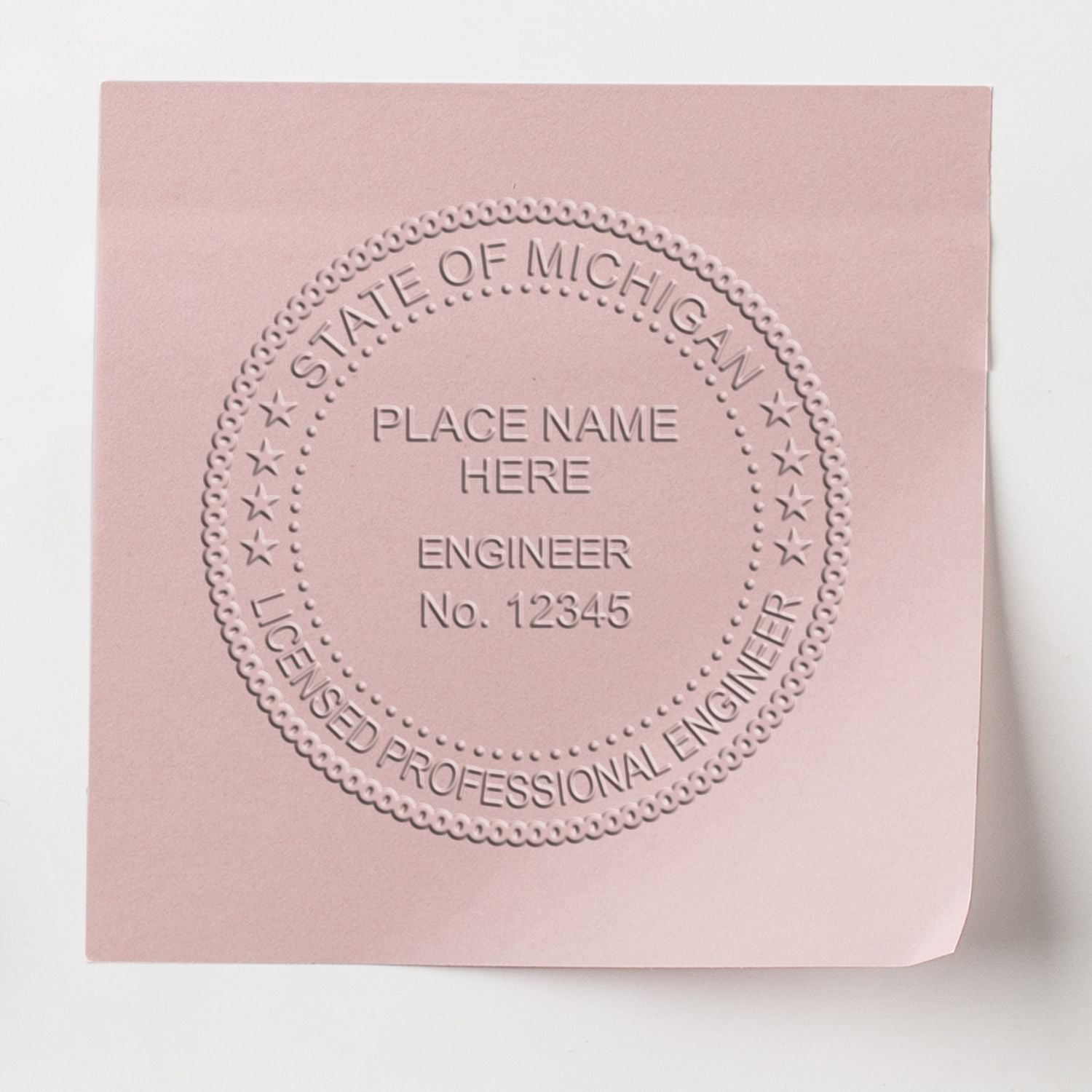

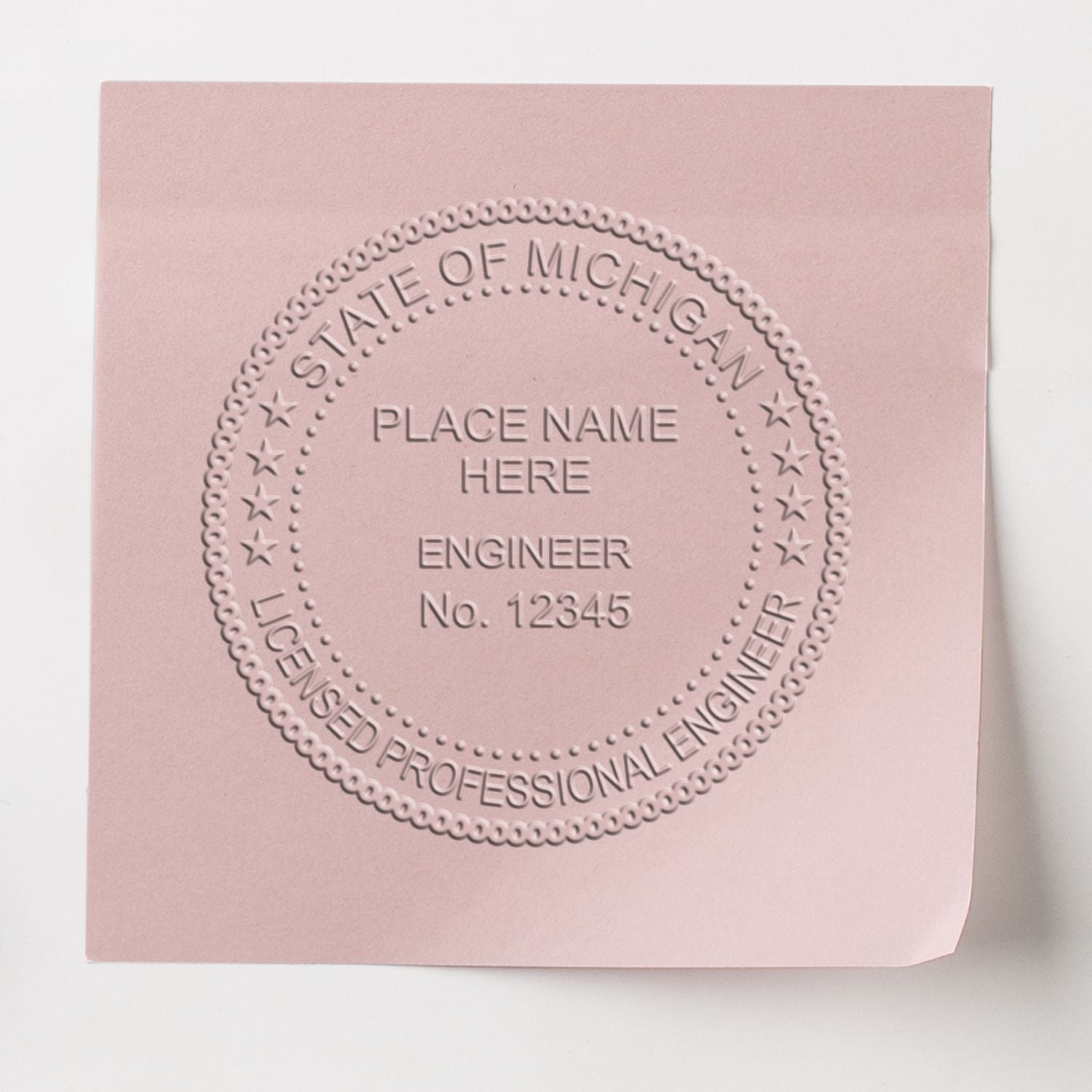
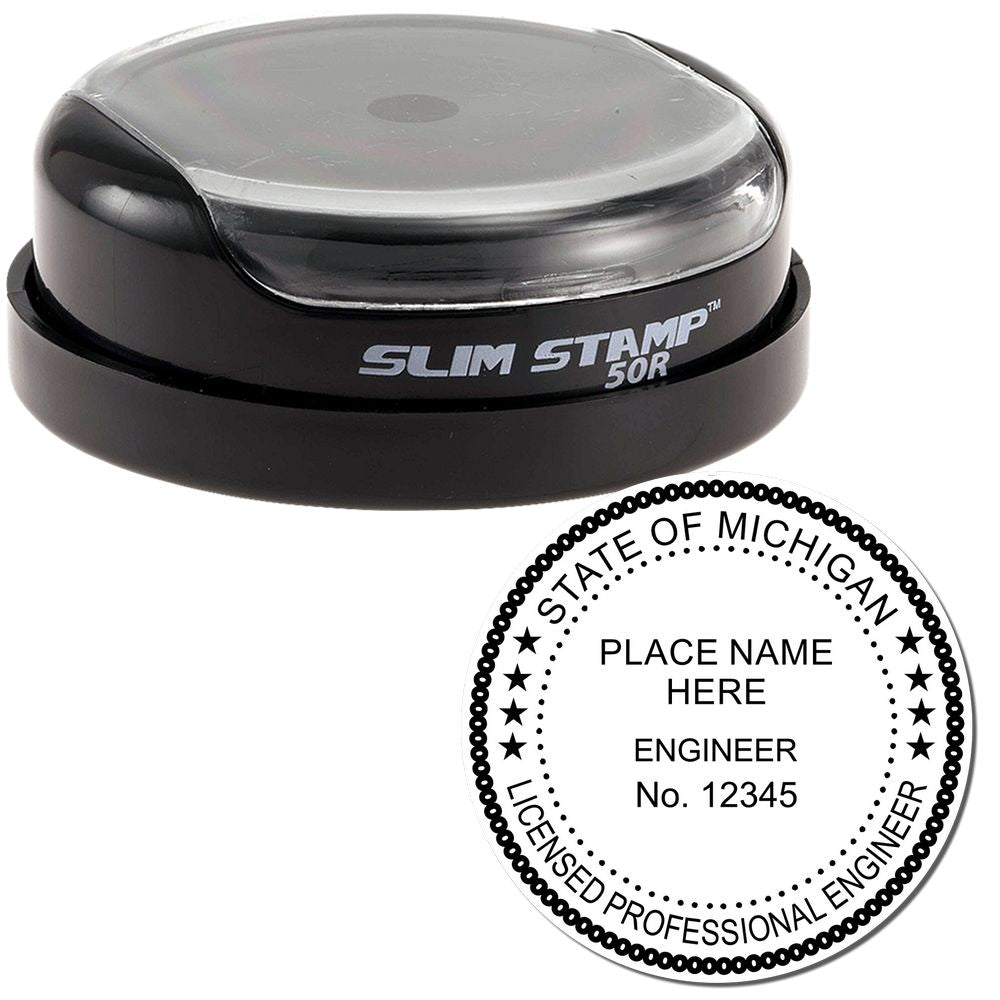
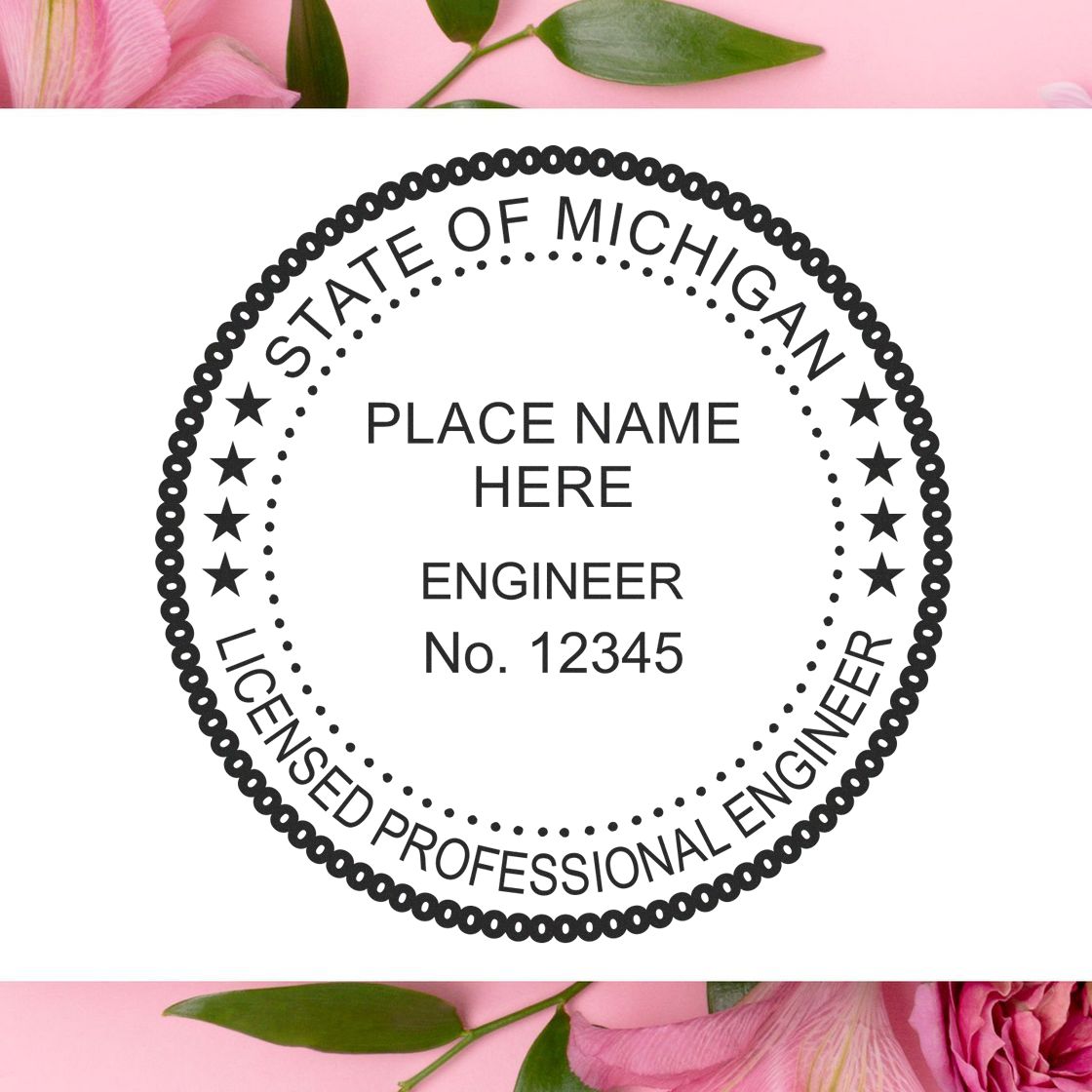
The Michigan Engineering Seal holds significant value for engineers in the state. Acquiring and utilizing the seal can bring various benefits, including professional recognition and credibility, as well as increased job opportunities and responsibilities.
Professional Recognition and Credibility
The Michigan Engineering Seal serves as a mark of professional achievement and expertise. When an engineer includes the seal on their documents, such as plans, specifications, and reports, it signifies that their work has been reviewed and approved by a licensed professional engineer.
By displaying the Michigan Engineering Seal, engineers demonstrate their commitment to upholding the highest standards of quality and professionalism. This recognition can enhance their reputation within the industry and among clients, colleagues, and regulatory bodies. It provides assurance that their work complies with the applicable engineering principles, codes, and regulations.
Increased Job Opportunities and Responsibilities
Possessing the Michigan Engineering Seal can open doors to new job opportunities and career advancement. Many employers, especially those in fields that require engineering expertise, prefer candidates who hold a professional engineer (PE) license and are authorized to use the engineering seal.
With the Michigan Engineering Seal, engineers may be entrusted with more complex and critical projects. They may take on leadership roles, oversee teams, and be responsible for ensuring the structural integrity, safety, and compliance of engineering designs and plans.
Moreover, the seal can provide a competitive edge in the job market, as it demonstrates a higher level of professionalism and expertise. It can differentiate engineers from their peers and showcase their commitment to excellence.
It's important to note that the use of the Michigan Engineering Seal is subject to guidelines and regulations outlined by the Michigan Department of Licensing and Regulatory Affairs. Familiarizing oneself with these guidelines is crucial to ensure proper usage of the seal. For more information on the requirements and guidelines for obtaining and using the Michigan Engineering Seal, refer to our article on Michigan PE stamp requirements and Michigan PE stamp guidelines.
By obtaining and utilizing the Michigan Engineering Seal, engineers can elevate their professional standing, gain recognition for their expertise, and unlock new opportunities for career growth and development.
About ESS
At ESS, we take great pride in being one of the leading providers of custom rubber stamps, professional seals, and notary stamps in the industry. With decades of experience in the field, we have established ourselves as a reliable and reputable source for all your stamp and seal needs.
Our team of experts is dedicated to providing top-notch customer service, ensuring that you receive personalized assistance in selecting the perfect stamp or seal for your needs. We understand that each customer has unique needs and preferences, which is why we offer a wide range of options and styles for you to choose from. At ESS, quality is our top priority. That's why we offer a state board guarantee on all of our products, giving you peace of mind knowing that your stamp or seal is built to last. We only use the highest quality materials to ensure that your stamp or seal looks professional and is durable enough to withstand regular use.
We also understand that time is of the essence, which is why we offer a quick turnaround on all of our products. Our streamlined process, coupled with our commitment to efficiency, ensures that you receive your stamp or seal in a timely manner without sacrificing quality. In short, ESS is your one-stop-shop for all your stamp and seal needs. With a focus on quality, customer service, and efficiency, we are confident that we can provide you with the perfect stamp or seal to meet your needs.

